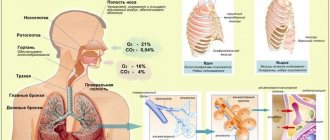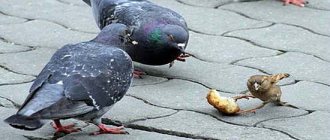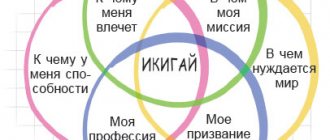Law of Opposites
Our life is unthinkable without opposites; it contains birth and death, love and hate, friendship and rivalry, meeting and parting, joy and suffering, loss and gain. Man is also contradictory: on the one hand, he strives to ensure that his life is stable, but at the same time, a certain dissatisfaction drives him forward. In a world of opposites, a person strives to find the lost unity with himself, with other people and with life itself. Everything has a beginning and an end, this is the earthly cycle and the cycle of life. Things, having reached their limit, turn into their opposite. A pair of opposites maintains balance, and the transition from one extreme to another creates the diversity of life. Sometimes in order to understand something, you need to see, to know the opposite of it. One opposite cannot exist without the other; in order for there to be day, night is needed.
Features of religion
As for the Religion of Taoism, it is one of the most ancient in China, originating in the 5th-3rd centuries. BC. Lao Tzu is considered its founder. And it is based on a teaching that represents the path to a harmonious life. The philosophical treatise “Tao Te Ching” began to be treated as a religious sacred book.
There are philosophical and religious directions in Taoism. The religious trend gave impetus to the emergence of new deities. One of these was God Yurdi. Heaven and Earth were subordinated to this supreme ruler. And Zao-Wang became the god of the hearth.
Nowadays, Taoism is widespread throughout China and has close ties with Buddhism and Confucianism. Many temples and monasteries were built, the design of which combines the features of all three Chinese religious movements. Taoist deities are used in paintings on the walls of religious buildings along with the Gods of Buddhism.
Who founded Taoism?
Lao Tzu is considered the founder of Taoism. This ancient Chinese thinker and scientist was the first to describe philosophy and rituals, and practically formed a holistic teaching. Some believe that this is a fictional figure. There are many legends about him. And there is no other evidence of his life.
The name Lao Tzu translates as “old teacher”, “eternal child”. Interestingly, according to legend, his mother carried him in her body not for 9 months, but for 81 years. Therefore, he came into this world as a gray-haired old man in 604 BC. Some are of the opinion that he lived during the time of Confucius or was Confucius himself. According to Chinese historian Sima Qian, he was highly educated and served as an archivist and librarian during the Zhou Dynasty. Another legend has its own version of the story of Master Lao Tzu, who seemed to be born again when he came from India to China.
Despite everything, in Taoism, a teaching of a religious and philosophical nature, he is revered as a deity by almost every Taoist school. He is considered one of the "Three Pure Ones". Emperors from the Tang dynasty, considering Lao Tzu their ancestor, deified and built temples for him and elevated him to ranks and titles.
Read our article “Red jasper stone against all adversities.”
Symbol of Taoism
The main symbol in Taoism is represented by the famous Yin and Yang sign. It symbolizes the masculine and feminine principles. They must be inseparable from each other. This black and white circle was invented by Taoist monks. It is associated with life, which is not only light or only dark. The black part of the circle symbolizes the feminine principle (calmness and balance), the white part symbolizes the masculine principle (active actions, pressure and strong vital energy). According to the monks, all living things can exist harmoniously only in such a symbiosis. These are two complements to each other. When a person has only one beginning, then he does not live according to the rules, which means he is not able to cognize the Tao and achieve immortality.
Principles of Tao
The principle of Tao lies in the naturalness of all human actions. Those who strive to change the World contradict Taoist ideology and the foundations of faith. Observation and the desire to be alone with oneself are welcomed, which contributes to merging with Perfection, the Absolute and eternal harmonious existence.
The principles are:
- Naturalness - implies the need to provide opportunities for each person to be himself and have his own views on the world. However, it also requires caution in relation to the environment.
- Not an act - living without doing anything purposefully. A person achieves maximum results with virtually no effort.
- Formlessness - suggests the presence of weakness and softness for immortality, eternal life. Power, strength and firmness are the companions of death.
- Transformation is that everything in our World has consciousness. Achieving wisdom gives a person the chance to transform into whatever he desires.
According to Taoism, only by following these dogmas will a person have a chance to achieve immortality, inner liberation and true happiness.
Mirror law
What irritates a person in others is in himself. What a person does not want to hear from other people is what is most important for him to hear at this stage of life. Another person can serve as a mirror for us, helping us discover what we do not see or know about ourselves. If a person corrects what irritates him in others in himself, fate will have no need to send him such a mirror. By avoiding everything that is unpleasant for us, by avoiding people who evoke negative feelings in us, we deprive ourselves of the opportunity to change our lives, we deprive ourselves of the opportunity for internal growth.
Forms of manifestation
Taoism was divided into several forms. This happened because it was necessary to satisfy the issues and interests of different sectors of society. There are three forms of manifestation of teaching:
- mystical;
- scientific;
- philosophical and ethical.
Basic concepts of Taoism
The poor went to the monks to receive advice and predictions. This was the mystical side of Taoism. Thanks to this influence of the enlightened, ordinary peasants were instilled with moral values and norms of behavior.
The monks constantly tried to find the secret of immortality. There were legends that Chiang Taolin, one of the supporters of Taoism, found a recipe for the elixir of eternal youth. But later it was lost, although the monk himself was worshiped for a long time and it was believed that he lived as a hermit in the mountains.
As a result of the following searches and studies of alchemy, many useful objects for humans appeared - a compass, gunpowder, porcelain, glass, and battering tools. The first theories about the origin of people and other living beings, heaven and earth also appeared thanks to the constant thoughts of the monks.
Ethics and philosophy were created on the basis of Taoism. The teaching helped the educated segments of the population to express themselves. But at the same time, universal equality was observed at the spiritual level. With the help of the philosophy of Taoism, it was possible to explain the essence of human existence and worldview, the purpose of life.
Law of chain reaction
If you allow your negative feelings to play out, one unpleasant experience will lead to another. If you live indulging in daydreams and daydreams, then reality will be supplanted by the illusory world of fantasy. It can be difficult for a person to stop the flow of his negative and unproductive thoughts, because... he develops the habit of worrying, worrying, suffering, dreaming, i.e. to escape from reality, from actively solving problems. To what you give more energy, there will be more. The thought to which you give your time acts like a magnet, attracting its own kind. It’s easier to deal with one disturbing thought than a swarm of obsessive thoughts. In the process of our communication with other people, we tend to adopt their moods through emotional contagion.
Stages of development of Taoism
In the first century BC. e. Schools of Taoism began to appear. Over time, they changed, and some merged into one institution. Main institutions:
- School of Heavenly Mentors;
- Quanzhen;
- Maoshan;
- Lingbao.
The School of Heavenly Masters, or “Five Buckets of Rice,” was the first to teach the basics of Taoism. It was founded by patriarch and mountain hermit Zhang Daoling. Over time, it was divided into southern and northern. But then the establishment became united again, its name changed to Zhenyi.
In the southern regions, in the times after the dominance of the Mongol tribes, the Quanzhen school opened. Maoshan or Shangqin existed until the 14th century. Here students practiced communication with spirits and higher powers. Lingbao focused on meditation; it was more like a Buddhist school.
In the fifth century, the number of adherents of Taoism increased: they were joined by hermits who dreamed of longevity. The doctrine at this time turns into religion, and its goal becomes the desire for immortality. At that time there were only 250 treatises with basic definitions, principles and concepts. And today there are more than 1,500 books and essays.
Basic ideas of Taoism
Taoism is not considered a traditional religion. It is based on the principle of equality of humanity. Thanks to this, philosophy was studied by different categories of people. But in the Middle Ages, monasteries were built where only enlightened monks were allowed.
In the 17th century, the Qing dynasty ruled, which encouraged the persecution of philosophy. The rulers considered the teaching to be pseudoscience, so they ordered to burn books, destroy monasteries, and punish supporters of Taoism. Rehabilitation began only in the 60s of the last century. But modern philosophy is different. It was based on meditation and magical rituals.
The teaching became famous in the West thanks to its unique martial arts, breathing exercises, and Feng Shui.
Pillars and Treasures
There are only eight methods, or pillars, of Taoism. They must be followed in order to improve your health and achieve harmony with the world around you. They are as follows:
- philosophy;
- update;
- nutrition;
- forgotten food;
- treatment;
- sexual wisdom;
- perfection;
- success.
The first pillar is necessary for knowledge of social and natural laws, the essence of existence and the purpose of life. Renewal means conducting meditations and practices to improve health. As for nutrition, you need to completely abandon meat and other animal foods. Forgotten food means that during strict diets and fasts you cannot eat at all. You will have to live exclusively on the water.
Extraction is the distribution of energy throughout the body through acupuncture and massage manipulation. Sex in Taoism is considered only as a method of strengthening sincere feelings and one of the types of therapy. The seventh pillar is excellence. A person must constantly develop and look for new buildings. And success means setting and achieving goals, fulfilling plans.
Lao Tzu called the three treasures of Taoism:
- qi;
- jian;
- Shen.
The first treasure is the energy of mercy, life and love. Jian means rational economy. This also applies to people’s appearance. You should not pay much attention to your clothes and hairstyle. It is enough to be neat and clean. Shen is a symbol of the intelligent spirit.
Fundamentals
What is Tao
This is a multi-valued concept that can be compared with the Absolute. Tao is:
- something that gives rise to everything around, incomprehensible, permanent, nameless and formless;
- common law;
- the fundamental principle of life;
- the beginning and end of life;
- world order;
- eternal path, constant movement.
Tao has no name and form, but gives them to everything that exists. Only it is permanent, and everything else is temporary. Here opposite phenomena are combined and become one.
Tao is emptiness, but thanks to it everything is created. Only by merging with Tao can one experience happiness and immortality.
Lao Tzu compared emptiness to a room: after all, what is important in a room is not the walls, but the space between them, that is, emptiness.
Main postulates
The main ideas of Taoism are that man is a microcosm, he exists endlessly, just like the Universe is a macrocosm. Death in the physical plane only means that the soul will unite with the Tao.
In Taoism, there is no color, form, personality, or self. There is emptiness, and the main task of a person is to contemplate and observe. Any action directed against the order of life wastes time, energy, and can sometimes lead to bad consequences.
The main goal of Taoism is to teach people to distinguish good from evil and do only good deeds, to reveal the secret of the Universe through meditation and looking inside, to acquire harmonious relationships with the outside world.
To comprehend the Tao, you need to remember and follow three main rules:
1. Nourishment of the soul
Divine and demonic beings live within man. Good deeds feed good deities, and evil deeds feed demons. The more virtue a person has, the closer he is to happiness.
2. Nourish the body
You need to eat without excess, following a diet and fasting. Ideal nutrition - with its saliva and dew of herbs. The body should also be nourished by physical and breathing exercises, and sexual relations should be with a regular partner.
The path of ascetic abstinence in food was difficult, so Taoist alchemists tried for a long time to find the elixir of immortality. The ruler of Qin Shi Huang Di even sent expeditions to search for him.
3. Wu-wei
This concept means "non-action." But not in the sense of being lazy and doing nothing. It would be more correct to say “non-interference” - in the natural course of events, the laws of the Universe. According to it, there is no need to purposefully do anything, because the Universe arranges everything on its own, and people’s initiative can only interfere.
According to Wu Wei's concept, the best ruler is the one who does not interfere in the lives of his subjects, does not change anything, and only sometimes prevents uprisings.
To know the Tao, you need to forget about your “I” and associate yourself with the entire world around you. Even when you are doing something, for example, cleaning the house, you must try to stop the flow of thoughts - the “I” absorbed in the task disappears. This practice is available at any time, even, for example, during normal walking.
Eight pillars
There are 8 pillars - methods of Taoism, which are aimed at improving and harmonizing relations with the world:
- Philosophy is the desire to understand the essence of existence, natural and social laws.
- Renewal – meditations and practices for health.
- Diet: abstain from meat.
- Forgotten food – “forgetting” food during fasts and diets.
- Healing is the effective use of energy and distribution through massage manipulations and acupuncture.
- The Tao of Sexual Wisdom - Sexual relationships are seen here as therapy and a way to strengthen feelings.
- Perfection is constant self-improvement.
- Success is defined goals and plans for mastering knowledge.
Three treasures
Lao Tzu named three human virtues that require protection and nourishment:
- qi – energy of life, love, mercy;
- jian – the energy of rational economy, which also determines the appearance of people;
- Shen is a spirit endowed with intelligence.
Taoists, in search of immortal life, invented glass and porcelain products, a compass, and gunpowder.
What it is
Taoism is a teaching that has become widespread in China. It is considered one of the oldest in the world - its origin dates back to approximately the 5th century BC.
Taoism is called a religious-philosophical view because it has absorbed features of both concepts:
- philosophy with its inherent study of being, knowledge, the Universe, philosophical treatises - Tao Chia;
- religion, which is based on faith in a higher power and presupposes a certain dogmatism, as well as indispensable spiritual practices - Tao Jiao.
However, such a division is hardly noticeable - as a rule, Taoism is viewed as a combination of religious and philosophical aspects.
At the same time, there is no God as such - the concept of “Tao” is the basis. It is multi-valued and implies the beginning, the way to comprehend the world order, the nature of the Universe and its laws. The main goal is to merge with the Tao, to become one.
There is an opinion that Taoist philosophy is in opposition to Confucian philosophy, and it is not without foundation. In both movements, the concept of “Tao” is present, but it is interpreted somewhat differently.
Confucianism sees Tao as adherence to moral principles and the rules of humanism. It presupposes the constant self-improvement of a person as a part of society - learning writing, exact sciences, music, and sportsmanship. In other words, Confucius looked at Tao from the perspective of social life.
In contrast, Taoism considers Tao as the nature of all things, the beginning of being. A person must live according to the laws of nature, be part of it, forgetting about his own “I” and not interfering with the measured flow of life. Simple and natural are the main characteristics of Taoist life.











